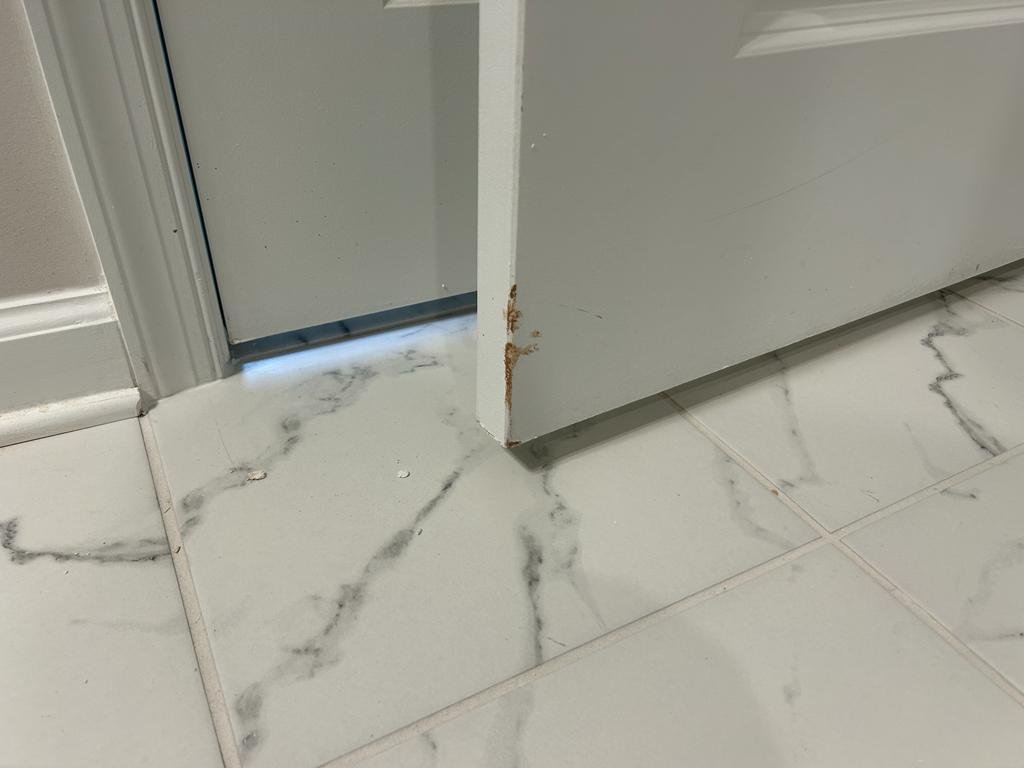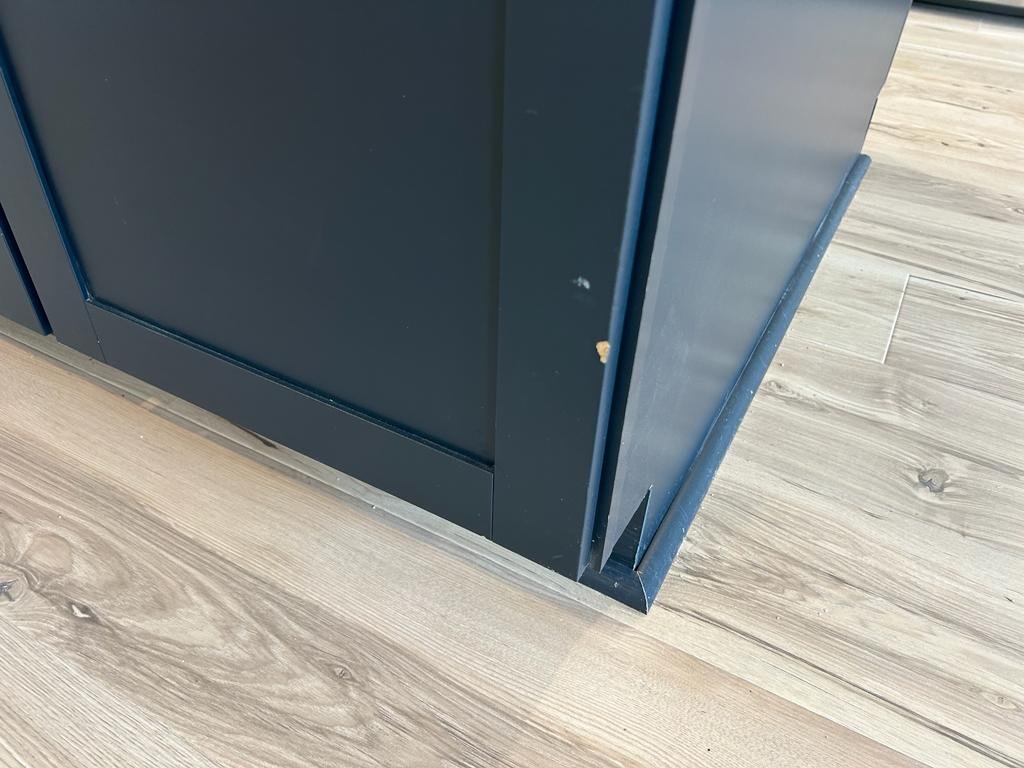Inspecting the Unexpected: A New Home Inspection Story in Northern Virginia
Picture this: Christmas vibes, holiday spirit, and a new construction home in Northern Virginia that turned out to be a bit of a Grinch. Yup, that's the scene I stumbled upon, and let me tell you, it's a wild ride.
In this post, I'm going to share what we uncovered during our recent new home inspection adventure. From bowed walls to nonexistent “finishing” touches, we're diving into a less-than-stellar new construction right in the heart of this sought-after Virginia neighborhood.
New construction homes can seem like an easy choice over older homes. But without an inspection, you risk running into safety issues, plumbing problems, missing insulation and more. But with a new construction inspection, you have the power to uncover these issues and request the necessary fixes before it's too late.
A disclaimer: While this is a completely true story, I won’t be sharing which builder was responsible for this. And the photos alone aren’t enough to expose the guilty. I will tell you that it’s one of the most common builders in Loudoun County, so if you are in the market for a new build, I highly recommend you schedule a new construction home inspection with me (in our scheduling tool, choose “pre drywall inspection”) so that you don't end up having to shoulder the burden of issues like these.
The problems, summarized:
1. The Flood
Arriving at a waterlogged home before even moving in - talk about a scenario nobody dreams of? We believe that it was caused by faulty supply lines attached to the sink in the wet bar. This meant that for several days (we can’t be sure how many), water was continuously flooding into the home. Not the real estate agent nor anyone wanted to uncover - especially not in an inspection for new construction.
To make things even worse, this happened on the 4th floor of this property. Which thanks to our friend gravity, meant that there was cascading water damage throughout each floor. Ooof (and thank goodness for inspections).
2. The Floors
Recall that domino effect of damage we talked about? Well, the floors couldn't dodge it either. In the left photo, you can see the floors have started to cup and warp. That’s because the water from the flood is causing the wood to expand and buckle. Just imagine if the supply lines into the house had been installed correctly and all the work had been done correctly. Then this property would have been a dream for inspectors and buyers alike.
Check out the moisture meter showing 14%? Yeah this new home, and any home for that matter, should be more like 6%. Thankfully, the builder will be remediating all of these issues uncovered in the inspection.
3. The Cabinets
No, it’s not your eyes. Yes, that is a gap between the bottom cabinets and the kitchen sink. I’m not going to spend time on the color, because cosmetic flaws aren’t part of a home inspection. But as you can see, these too-small cabinet doors are also the wrong color. Though this isn't technically against any building codes, it's certainly not something you'd like to uncover as part of the home inspection process - especially at what should be one of your final approvals.
Even if you may not have needed a home inspection to spot this issue, having it codified in a formal report makes sense (and it much easier to get your builder to take care of it).
4. The Floating Trim
It may seem obvious, but yes, trim should be attached to something. Why is it like this? We don’t know. The biggest culprit is most likely a lack of attention to detail during the construction process. Why is it a problem?
Not only can moisture seep into the house, but the trim itself is susceptible to being completely torn off during one of those gusty days that Loudoun is infamous for. While this may be a common defect inspectors look for, that doesn't mean it's an excusable one. Some builders may try and cut corners - and it's up to you to request the necessary repairs before the final inspection.
5. The Lack of Trim
Or, in this case, the builder decided to skip adding trim entirely along the bottom of the door as part of their building process. Good news: at least when the moisture seeps in, the commercial grade dehumidifier is already there (not). However, if you are starting to question your investment at this point, we might understand why. Thankfully, as we alluded to above, builders are obligated to make these type of repairs before the final inspection as part of their construction process. So fear not, there are a few ways to to deal with things, and most buyers do find a way to work through any issues while the property is still within 'builder time'.
6. The Sloppy Caulking
Similar to trim, caulking is designed to maintain the right level of moisture in your home. And when it’s rough like this, it’s not gonna do its job. You may have noticed by now, but this real estate was having some serious issues with keeping the dry places dry, and the wet where it should be (generally, outside the building). And while your new home should not be encountering these types of issues, you can rest assured that your inspector will find them so that you can get them taken care of before this construction is marked "done".
7. The Gaps in the Garage
Did you know that drywall in the garage is specially designed to slow down fire and deflect gasses like carbon monoxide away from the living area? Yup it's true - bet you didn't know your garage had your safety in mind.
But if there’s a giant gap in that drywall, it’s not going to work. Not to mention that if it’s hot or cold outside, all of that air is going to seep into your home, forcing your HVAC systems to work harder and your electricity bill to go up.
8. The Footprints on the Ceiling
Although most garages remain unpainted, that doesn’t mean you want to permanently see footprints on your ceiling. Again, while it's a far cry from some of the structural issues that we could find, it's still a symptom of a greater issue throughout this home: a lack of attention to detail or effort on the behalf of the builders.
9. The Overall Quality of Workmanship
If someone showed you these photos, you’d assume it was a foreclosure, not a new construction. And for a home with a price tag close to a million dollars, you might expect more. And you’d be right.
Although the builder will address all of these items, this home was presented as “ready to close” - when it clearly is not. Inspectors are trained to spot issues that may not be obvious, but things like this hurt. Though they may not be a safety issue or something related to structural components, they don't make a buyer feel empowered about their investment.
In the grand unveiling of this new construction inspection ordeal, we've uncovered a whopping nine major issues that could turn any dream home into a potential nightmare. From not-so-hidden moisture problems to trim perilously dancing in Loudoun's gusty winds, it's clear that a vigilant eye is crucial when it comes to ensuring your home sweet home stays sweet. A thorough home inspection is the most effective way to achieve this.
Your new construction home inspection
So, whether you're on the brink of your own new construction venture or settling into a freshly built abode, we urge you to consider the importance of a new home inspection in Northern Virginia. Don't let the excitement of a new beginning make you forget to carry out your own due diligence on your home. It'll give you peace of mind, so that when you go into your final walk through, you can do so with confidence.
Schedule your new construction home inspection. Your home inspector will look at all the major systems of your new house. This can help you to avoid costly repairs down the line, from incorrectly installed appliances to leaking pipes, I've seen it all - even from reputable builders.
And once you've been in the home, living it in real life? Give me a call for your 11 month warranty inspection.














